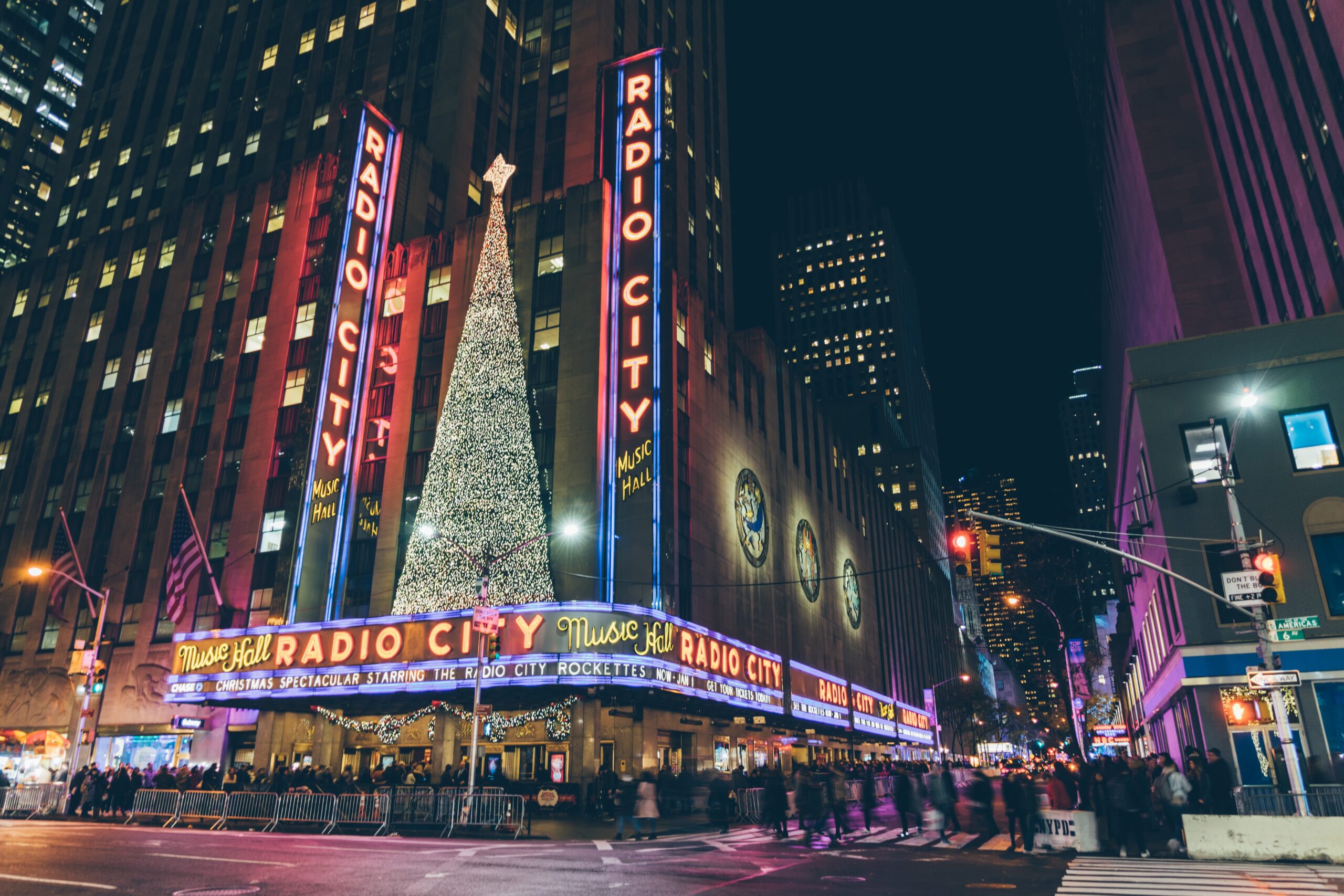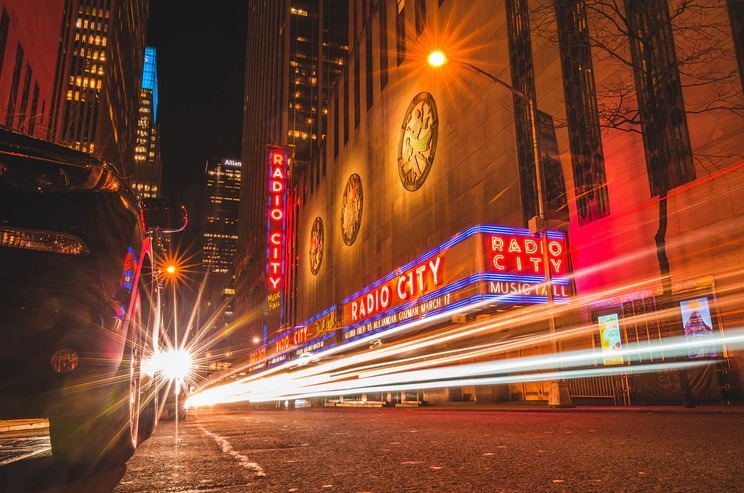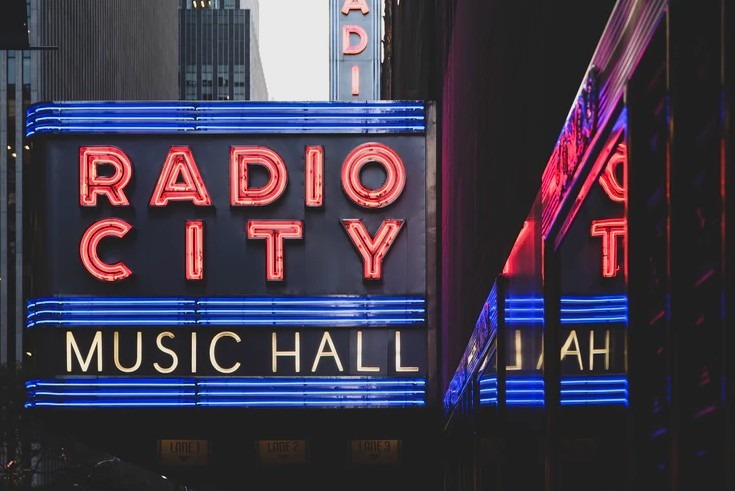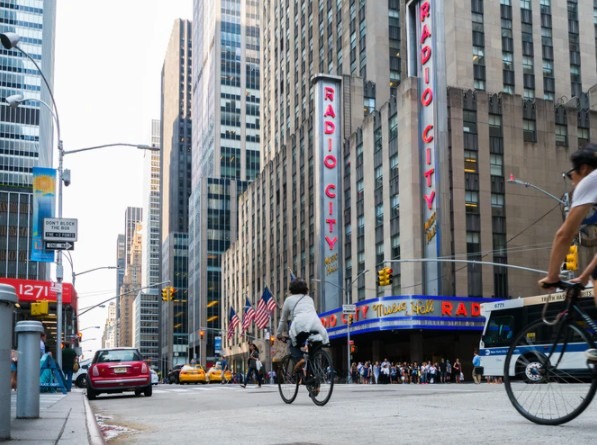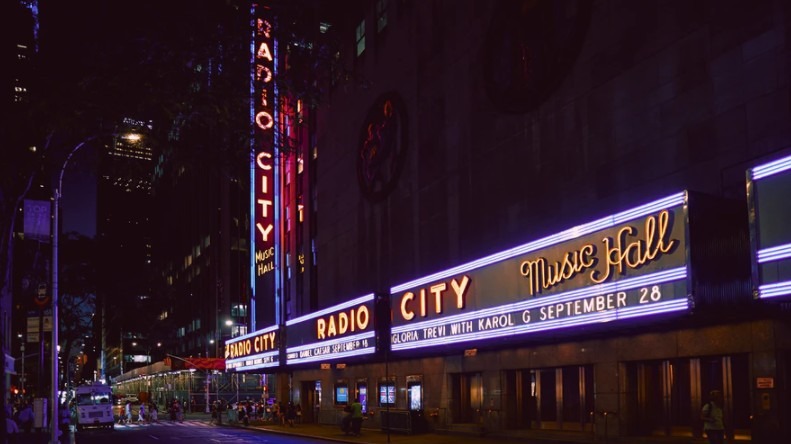One of the Art Deco Style’s prime examples and as one of the most spectacular theaters in America, the Radio City Music Hall possesses immense value not only to New York City’s history and architecture but to the entire country itself. Since its opening in 1932, millions of people have watched high-quality entertainment in the venue, from movies, concerts, stage shows, and special events, staying true to its nickname as the “Showplace of the Nation.” In this post, let’s revisit the landmark’s fascinating history, why it was built, what it has been, and what it is today.
Conception
In the late 1920s, the parcel of land where Radio City Music Hall nestles today was supposed to be the site for the new Metropolitan Opera House. Plans didn’t materialize as the stock market crashed and business outlook became pretty dim, resulting in its formal cancellation in 1929.
John D. Rockefeller, Jr. had other plans, however, as he pushed through his vision to create an entire city within a city. Known today as the Rockefeller Center, it produced thousands of jobs for people during the Great Depression and paved the way for the construction of superior property buildings and stunning infrastructures. The complex became an insignia of optimism and hope, proving that New York can still flourish in times of despair.
Part of the complex’s construction was to build a theater. After searching for a commercial partner, Rockefeller eventually secured a deal with Radio Corporation of America (RCA) to build the theater. Though a relatively young media company, RCA was already enticing a huge audience through their NBC programs, as well as producing flicks that helped people digress from one of the most severe depressions that ever hit the Western world.
In 1930, Samuel Lionel “Roxy” Rorthafel joined the center’s advisory board. A renowned theatrical genius and successful theater operator, Roxy dominated the industry, implementing various innovations that aided the revival of struggling theaters across the country.
With Rockefeller’s financial prowess, RCA’s media presence, and Roxy’s talent, the trio created the framework of the theater that would be the palace of people, offering top-notch entertainment for the ordinary people at prices they can afford. Moreover, it had to be a place of beauty, something New York had never seen before. Meanwhile, we also suggest you visit the link to find out the best online casino australia.
Construction
Radio City Music Hall’s construction began in December 1931, with architect Edward Durell Stone and interior designer Donald Sidney Deskey at the helm of the venue’s design. The latter, who was relatively unknown before the project, transformed that interior into a masterpiece that exudes grace and elegance, without the excess and glitz.
Deskey designed over thirty spaces for the hall. Each having its own scheme, all while incorporating a brilliant variety of materials, ranging from gold foil, permatex, glass, cork, marble, ceramics, wood, and aluminum. A perfect approach to break the monotony, he also used geometric ornamentation that beautifully complemented the overall aesthetics. The result was one of the most awe-inspiring Art Deco-style interiors that takes any visitor’s breath away.
One of its highlights is the renowned “Great Stage” that stretches 100 feet long and spans 60 feet wide. As contemplated by Roxy, the spectacular stage resembles the setting sun. Adding the sophisticated mechanical systems, such as the impressive lighting, hydraulic-powered elevators, and other equipment, the Radio City also ranked among the most impressive theaters of its time. And here’s the link to the most trusted real money casino usa for some extra fun.
Opening and Later Years
After a year of construction, the Radio City Hall formally opened on December 27, 1932, with a stage show featuring performances from Martha Graham, Doc Rockwell, Ray Bolger, and The Mirthquakers. While the opening of the 6,200-seat Hall was not a success due to an incredibly long program and other variety of issues, the theater’s aesthetics was well-acclaimed, with a review even citing that the hall didn’t need performers, as its comfort and beauty were ample to satisfy the playgoers.
In the first forty years, the Radio Music Hall switched various times as a gala stage show site and as a movie theater. The first movie shown was Frank Capra’s The Bitter Tea of General Yen. Gilbert Cates’ The Promise became the last film featured in the venue under its movie-plus-stage-spectacle format in which ended 1979.
More than 700 films have premiered in Radio City since the flick was showcased in 1933. Some of these memorable films included King Kong (1933), To Kill a Mockingbird (1962), and The Lion King (1994).
Decline
While other theaters have closed, the Radio City Music Hall survived the ‘60s and the ‘70s music. Yet, it doesn’t mean it didn’t have to go through problems of its own. As early as 1962, officials planned to close down the venue. Its high operating costs, the arrival of subtitled foreign movies, film distribution changes, and the limited film choices all took a toll on Radio City. By 1977, its annual attendance had plunged to 1.5 million, a significant decrease from the 5 million visitors it had the previous decade.
By January 1978, Radio City Music Hall was in debt and was announced to be closed on the 12th of April. Talks on converting it to a shopping mall, a hotel, a tennis court, a theme park, and an aquarium arose. Thankfully, combined commercial and preservation interests saved and protected the venue. One of which was the New York City Landmarks Preservation Commission’s decision to make Radio City Music Hall’s interior a city landmark on March 29, just less than two weeks before its intended closure. In May the same year, it was listed on the National Register of Historic Places.
Resurgence
Escaping demise, the Radio City Hall went into renovation instead in April 1979 and reopened to the public in 1980. It diversified its selection of performances and shows. Later on, the venue shifted to producing and showcasing concerts. In 1985, it recorded its first profit after three decades while its exterior was also designated as a city landmark.
Since then, the Radio City Music Halls also opened its door to televised events, world premieres, inaugural functions, media events, and award shows. Thereby, remaining as the country’s leading hall and continuing its purpose to amuse the people.

